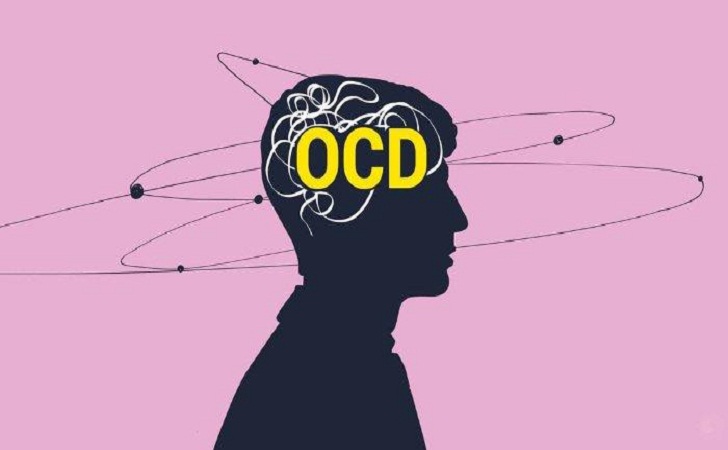Report: Dwi Fatimah
RIAUONLINEPEKANBARU – Have you ever heard the term OCD? OCD or Obsessive Compulsive Disorder is a condition where an individual’s inability to control his thoughts becomes an obsession, which causes individuals to often repeat certain actions to reduce their anxiety levels.
In practice, each individual can be different. For example, feelings of anxiety about personal hygiene that will be manifested by washing hands repeatedly, checking the door of the house repeatedly.
OCD is a mental health problem that is common in children, adolescents, and adults around the world. Most OCD diagnoses occur at age 19 and are more likely to affect boys than girls.
Unfortunately, the cause of OCD is still not known with certainty until now. However, there are several factors that increase the risk of developing this mental disorder in a person, including:
1. Brain structure and function. However, this factor is still not certain to have a significant effect or not.
2. Heredity or genetics.
3. Living environment.
Of the three, living environment is the most influential risk factor. OCD will be more prone to occur in people who live in an environment that does not support psychological development as a child. For example, children are often ridiculed or belittled because of their shortcomings. This condition can trigger a reciprocal feeling to always do the perfect thing.
People with obsessive compulsive disorder can have obsessive and compulsive symptoms, or even both. All of these symptoms can interfere with almost every aspect of an OCD sufferer’s life, from work, school, to personal relationships.
–
Obsessions are repetitive thoughts, impulses, or mental images that cause anxiety. Symptoms of OCD disorder usually include:
- Fear of germs
- Fear of making mistakes
- Fear of embarrassment or socially unacceptable behavior
- Unwanted taboos or prohibitions include sex, religion, and danger
- Aggressive thoughts about yourself or others
- Requires things to be symmetrical or in perfect or exact order
- Excessive doubtful thoughts and the need to confirm over and over
Meanwhile, compulsions are repetitive behaviors with OCD sufferers because they feel the urge to do something in response to obsessive thoughts.
Symptoms that occur generally include:
- Bathing or cleaning or washing hands excessively and repeatedly
- Refuse to shake hands or hold the door handle
- Sort and arrange items in a precise and special way
- Checking something over and over again, like repeatedly checking a locked door
- Counting compulsively
- Eat in a specific order
- Stuck on words, pictures or thoughts that are usually distracting and won’t go away and even disturb while sleeping
- Repeating certain words or sentences or prayers
- Need to perform a task in several times
- Collecting or hoarding items with no clear value
It’s normal for someone to double check things to make sure everything is safe. However, unlike OCD sufferers, they can do it over and over again. There is usually a specific behavior associated with this, such as:
- Unable to control one’s thoughts or behavior, even if the thought or behavior is recognized as excessive
- Spend at least 1 hour a day on these thoughts or behaviors
- Displeased when performing behaviors or rituals, but may feel a momentary relief from the agitated thoughts of the mind
- Experiencing significant problems in daily life because of these thoughts or behaviors
A physical examination is performed to confirm the diagnosis of OCD. In addition, a physical examination is also carried out to help eliminate the possibility of other health problems as well as check for potential complications.
Next, the doctor will perform several supporting laboratory tests, such as a complete blood count, thyroid function tests, and screening for alcohol and drug consumption.
In addition, a psychological evaluation including discussing feelings, thoughts, symptoms, and behavior patterns can also be done. The diagnosis of OCD refers to the Diagnostic and Statistical Mental Disorders (DSM-5) released by the American Psychiatric Association.
Unfortunately, OCD is an incurable mental health problem. However, sufferers can reduce symptoms that can interfere with activities by undergoing several treatments.
OCD treatment consists of taking medication, undergoing psychotherapy, or a combination of the two. Although most people with OCD improve after receiving treatment, some continue to experience symptoms.
Sometimes, people with OCD also have other mental health problems, such as anxiety disorder, depression, and body dysmorphic disorder, which is a disorder in which a person mistakenly assumes that there is an abnormal part of their body. So, it is very important to look at the potential for these other disorders when making treatment options.
SRIs and SSRIs are two types of drugs that are widely used to help reduce OCD symptoms. In addition, other drugs that have been shown to be effective in treating OCD in adults and children are tricyclic antidepressants. This drug belongs to the older class of “tricyclic” antidepressants, and some of the newer SSRI drugs. If symptoms do not improve after using these types of drugs, the doctor will prescribe antipsychotic drugs.
In addition to drug consumption, psychotherapy is also believed to be quite effective in treating OCD in adults and children. Certain types of psychotherapy, including cognitive behavioral therapy (CBT) and other therapies (e.g., habit-reversal training) are as effective as medication for some people with OCD.
In addition, a type of CBT called Exposure and Response Prevention (EX/RP) provides effective results in reducing the frequency of occurrence of compulsive behaviors in OCD. In fact, this effect was also seen in people who did not respond well to SRI drugs.
For some sufferers, EX/RP is an alternative treatment option when taking SRI or SSRI drugs are not able to effectively treat OCD symptoms.
OCD that does not get treatment can lead to various complications related to the sufferer’s mental problems. These include stress, depression, and anxiety disorders.
–


